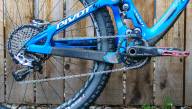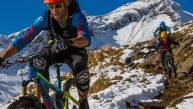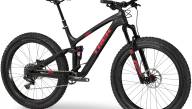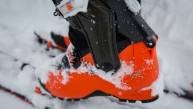tags:
trek stache |tgr news |scott genius plus |plus wheels |plus sized bikes |plus bikes |interbike 2015 |google news |bike trends
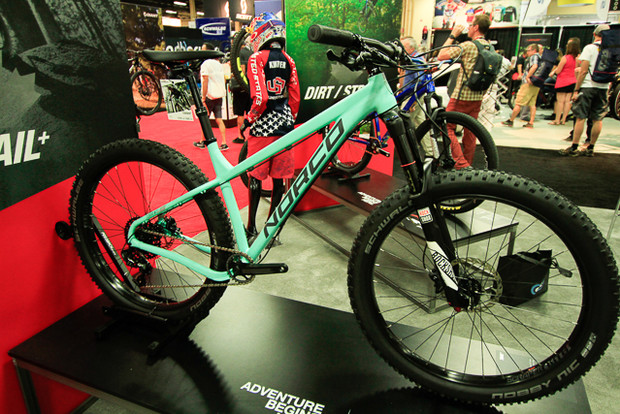 The Norco Torrent hardtail was one of many new entries into the plus-sized wheel market seen at Interbike this fall. Ryan Dunfee photo.
The Norco Torrent hardtail was one of many new entries into the plus-sized wheel market seen at Interbike this fall. Ryan Dunfee photo.
By now, you've likely heard about the quiet onslaught of plus-sized mountain bikes coming to market, with 2.8-3.0" tires that somewhat split the middle between regular mountain bike tires and monster truck fat bike tires in the 4.0-5.0" range. At first glance, this probably comes across as another marketing gimmick designed make your current bike technology antiquated and force you to buy into a whole new program. Kind of like Boost hubs, although, like it or not, those are seemingly destined to take over the majority of the market, while it's doubtful plus-sized wheels will. But, for starters...
What the Hell are Plus-sized Wheels, Anyways?

Plus-sized wheels are tires generally in the 2.8-3.0" range, available on either 27.5" or 29" wheels that are at least 25% wider than your standard mountain bike rims (although not all manufacturers have followed this reasoning, as we'll see in a bike review later this fall) in order to properly mount the bigger tires and keep them from flexing awkwardly. They require, by and large, frames and forks built to accommodate them, although bikes like the Pivot Mach 429 Trail we tried out at Interbike have space for either regular 29" wheels or 27.5" wheels with 2.8" tires. Riding a 27.5" plus bike gets you a total wheel diameter about the size of a normal 29'er, which is reflected in some of its handling characteristics.
Some have even whispered of introducing a 26" plus wheel size–which would bring the total wheel with tire into the same size range as a normal 27.5" wheel–which would be hilarious redemption for those who mourned the death of 26'ers.
Plus-sized wheels are supposed to provide greater traction because of the larger contact patch the tire has with the ground, and also provide a smoother ride on technical terrain because the large-volume tire, run with roughly 13-15 psi instead of a normal mountain bike tire's 23-30 psi, absorb more of the terrain. While both these characteristics borrow from fat bikes, manufacturers tout that plus-sized wheels don't have a ton more rolling resistance than a normal tire, making a negligible difference in trail speed.
What Good are They, Then?
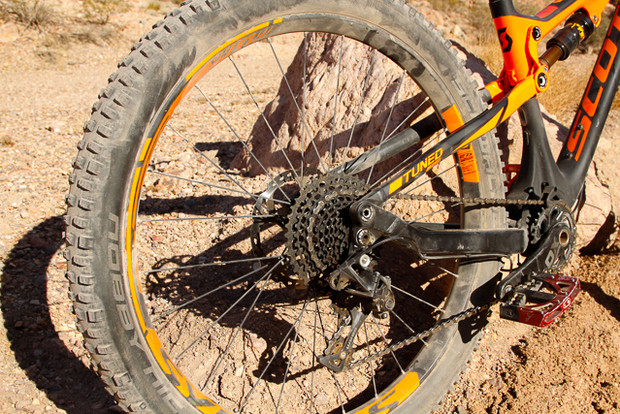 The big tires produced a huge jump in traction on steep and techy climbs, and really calmed the trail in technical sections. Ryan Dunfee photo.
The big tires produced a huge jump in traction on steep and techy climbs, and really calmed the trail in technical sections. Ryan Dunfee photo.
As was mentioned above, the plus tire attempts to meld the faster rolling speeds and sharper handling of a normal-sized wheel with the traction, bump absorption, and ultimately, control of a traditional fat bike. As we found while testing Scott's Genius Plus trail bike, which sported a pair of 3.0" Schwalbe Nobby Nics, this meant a huge jump in increased traction while climbing steep or technical terrain, a big jump in grip on loose corners, and an ability to point the bike straight into whatever reckless line we could think of down a rock garden, give no thought whatsoever to picking a flowy line, and feel the bike track straight and smooth as the tires absorbed everything underneath us. The bike would rarely deflect hitting rocks at an angle, and tracked straight and predictably through loose or technical sections of trail.
On hard-packed, smooth singletrack, there was only a slight perception of a decrease in speed compared to a normal bike.
So Who are they Good for?
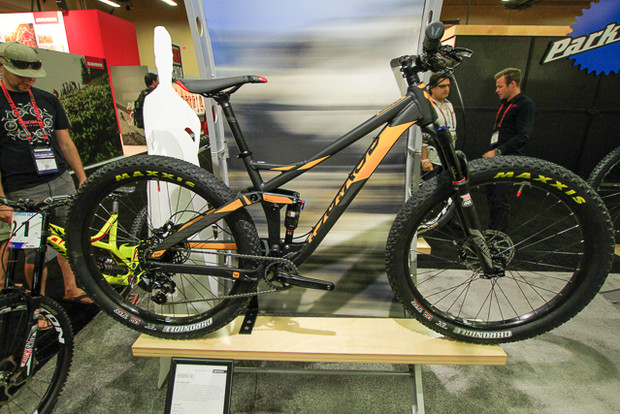 Devinci rolled out an affordable-ish plus bike in the $3000 Hendrix, but prices need to fall further for the crowd who could benefit most: beginners. Ryan Dunfee photo.
Devinci rolled out an affordable-ish plus bike in the $3000 Hendrix, but prices need to fall further for the crowd who could benefit most: beginners. Ryan Dunfee photo.
When we asked tire, wheel, and bike manufacturers who they thought the plus-sized bike would ultimately serve, we got all kinds of answers. Some thought they'd be mostly relegated to the growing bike packing niche, where bikes like the Rocky Mountain Sherpa aim to give bike packers a rig they can take on pure singletrack while also being able to handle remote, ugly horse trails or other trails that had been cut in with little consideration for mountain bikes. Others thought a wide variety of bikes would see them slapped on–like the fun-focused Trek Stache 9 we tested earlier–while others still thought the de facto mountain bike tire size would either end up being 2.8", or something between the largest downhill tire sizes and current plus-sized tires. Or perhaps just that, with the influence of plus-sized tires, all riders would see their tires jump up a size. Cross-country riders might jump from a 2.1" tire to a 2.35", all-mountain riders from a 2.35" to a 2.5", and so on.
CHECK OUT: TGR's full gear coverage from Interbike 2015
But what was the most intriguing possibility for the new wheels is their ability to rapidly bring beginner and intermediate riders to a new level of comfort and skills in technical terrain. While I could bring my largely novice partner on a four or five hour mountain bike ride on the butter-buff singletrack up at Kingdom Trails in Vermont with literally no issues, as soon as we got on trails with rocks and roots sticking out, her confidence and comfort level dropped off dramatically. Noting that technical terrain is often the most discouraging factor for those considering getting into the sport (besides, well, the cash needed to do so), a few folks thought this is where plus-sized wheels could really benefit riders, and I agree.
Given the ease with which I was able to both climb and descend technical sections on Scott's Genius Plus, and how smoothly and with minimal deflection the larger tires rolled through rocky sections, it's truly exciting to imagine how much faster a beginner rider could improve on the more forgiving setup of a plus-sized ride.
Unfortunately, almost all the plus bikes we saw at Interbike this year were targeted either towards bike packers or slapped on expensive bikes targeted towards advanced riders. But if manufacturers could accelerate the trickle-down effect, and get plus-sized wheels, tires, and frames to market with budget-minded introductory riders in mind, it could really do for mountain bikers what rockered and hybrid-shaped skis and snowboards have done for winter athletes who previously had a much steeper learning curve to master before really starting to enjoy themselves on the hill.






